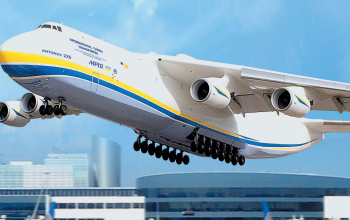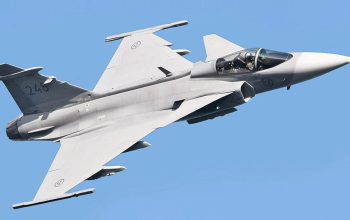The ones that dominated the sky during the biggest war in history.
We can all agree that The World War II was a devastating conflict, but it also paved the way for interesting and even weird designs for the weaponry ranging from tanks, artillery and air force, and among these renowned machinery, two of all-time greats like Supermarine Spitfire of the Great Britain’s Royal Air Force and Messerschmitt Bf 109 of Nazi Germany’s Luftwaffe. Back then, these two models were always in a competition with each other even before the war started and they both had their pros and cons that kept the competition heated. Let’s dive into the histories of these fighters and see which one is better in which aspect.
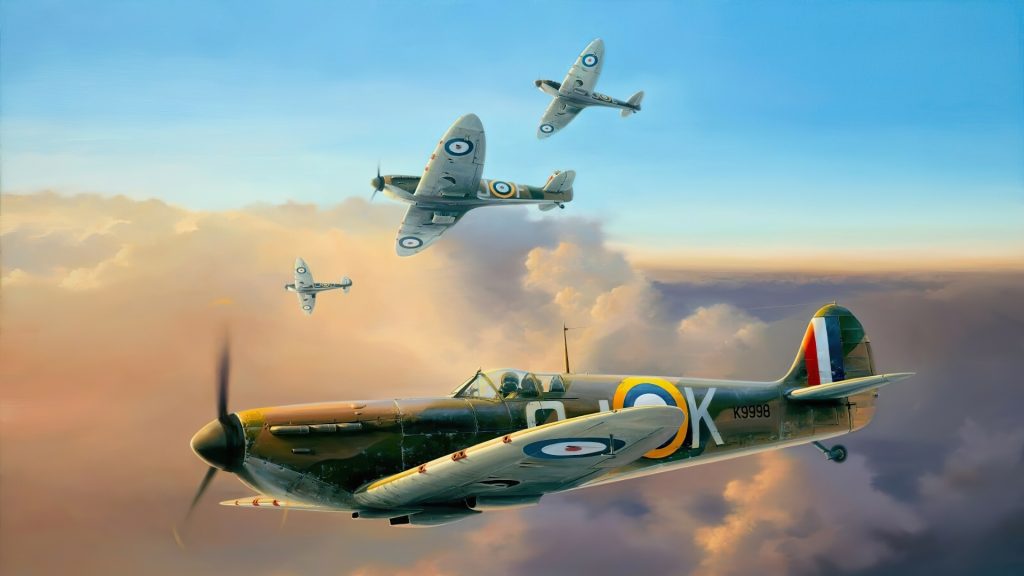
Spitfire – The History & Important Facts
Built by the British aircraft manufacturer Supermarine, the Spitfire was a light and nimble fighter plane with many variants built from 1936 until the end of World War II. It was designed as a short range, high-performance interceptor for RAF that’s equipped with an elliptical wing developed by R.J Mitchell, chief designer of the brand. The origins of the Spitfire go way back to 1931 when the Air Ministry called for a modern fighter that can fly at 400 km/h (250 mph) through specification F7/30. R.J Mitchell then designed Supermarine Type 224, which was an open-cockpit monoplane that adorned big gullwings and fixed undercarriage and it was powered by an evaporatively cooled Rolls-Royce Goshawk engine producing 600 HP. Even though it was a massive disappointment, the Type 224 is considered as the earliest version that led to the Spitfire’s final design. Until 1936, Mitchell and his team worked on new designs and the model underwent many changes under the new Type 300 name. It featured a more powerful Rolls-Royce Merlin V12 engine, and the first test mule of the Spitfire, named as K5054, took flight on March 5th, 1936.

The prototype was designed to be as sleek as possible according to R.J Mitchell and the prototype was named ”Spitfire”. Like a preproduction test mule car, the prototype was missing some parts that didn’t hamper its flight and adorned a glossy gray paint. The flight tests were done by pilot Captain Joseph ”Mutt” Summers, who took the plane off from Eastleigh Aerodrome (Today’s Southampton Airport) and the first flight lasted for eight minutes. Following the first flight, a set of other test flights were made, and the results showed that the Spitfire wasn’t up to par with Mitchell’s standards yet. The oversensitive rudder and the top speed of 530 km/h (330 mph) meant that Spitfire was yet to be a full-fledged fighter. In the next set of tests, however, a new propeller was attached to the aircraft, which allowed it to accelerate up to 560 km/h (348 mph). This made it the fastest military aircraft in the world back then, easily beating the record of Hurricane. The prototype was delivered to RAF for testing in the upcoming months and Air Ministry placed the first production order on June 3rd. Even after the production began, the Spitfire was developed continuously until the end of WW2.
Spitfire – The Performance & Operations
The Spitfire played a wide role during the war. Its operational history began with 19 Squadron at RAF Duxford on August 4th, 1938. Spitfire aided Hurricane units on defending against the Luftwaffe units, particularly the one that we’ll be talking shortly, the Bf 109. The Spitfires fought against the Bf 109 German escort fighters while Hurricane squadrons took care of the bombers. Well known pilots of the Spitfire during the war include James Edgar Johnson who shot down 34 enemy aircrafts, Douglas Bader with 20 enemy aircrafts and so on, believe me, the list goes only thicker and thicker. The Spitfire wasn’t just used by RAF for attacking purposes too, it was also a high-speed photo-reconnaissance aircraft that was unarmed, and these PRU aircrafts brought first photographs of the German radar systems Freya and Würzburg, and confirmed that the Germans were building Vergeltungswaffen rockets with photographs from Peenemünde. The Spitfire was widely used by other air forces as well, and over 30 countries purchased Spitfires for their fleet.

The Spitfire was a huge success performance-wise. The EN409 model flown by J.R Tobin in 1943, reached 975 km/h (606 mph, Mach 0.89) speeds in a 45° dive. The same model later flown by Anthony F. Martindale, and although the aircraft suffered from engine failure, the dive put the model to Mach 0.92, which was the fastest a piston-engined aircraft ever been. The kerb weight of the Spitfire was 3,057 kg (6740 lbs) which was 357 kg more than its rival Bf 109. Overall, the Spitfire was a competent fighter with its elliptical wing design and the powerful Rolls-Royce engines it was powered with.
Now let’s take a look at Spitfire’s German rival, the Messerschmitt Bf 109.
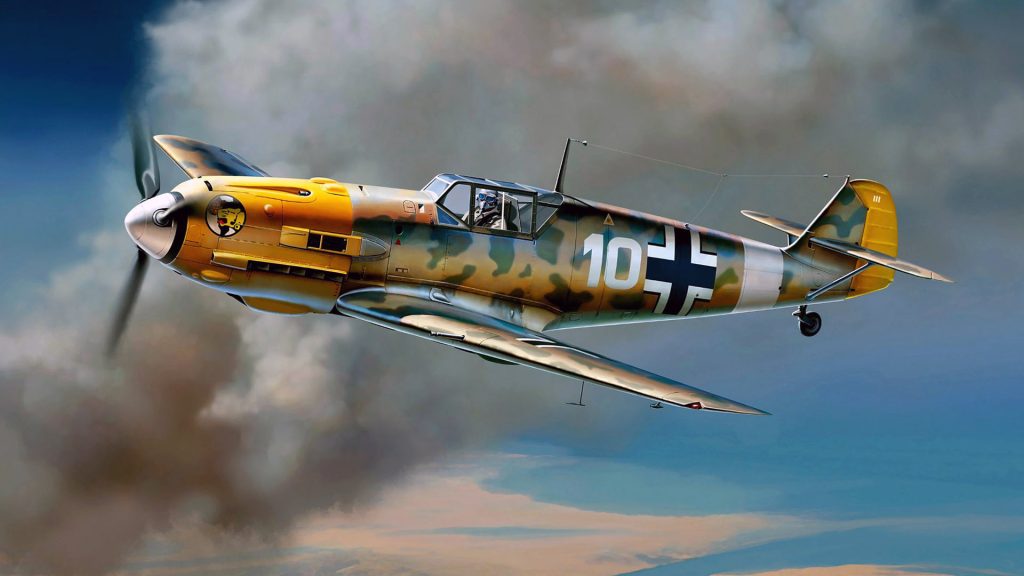
Messerschmitt Bf 109 – The History & Important Facts
The backbone of Luftwaffe’s air force alongside Focke-Wulf Fw 190, the Bf 109 was one of the most advanced fighter planes of the time upon introduction in February 1937 by Messerschmitt AG. Designed by Willy Messerschmitt and Robert Lusser at Bayerische Flugzeugwerke during the early 1930’s, it was first utilized in the Spanish Civil War and was on service until the end of WW2. It is also the most produced fighter aircraft to date as a total of 33,984 production units were made between 1936 and 1945, and some of the models were made in Nazi concentration camps through slave labor. Like Spitfire, the Bf 109 was a multi-purpose aircraft used for reconnaissance as well. After the war, the remaining units were sold to other air forces in Europe.
Like Spitfire, the development of the Bf 109 began in the early 1930’s shortly after the foundation of Nazi Germany. The Reich Aviation Ministry (Reichsluftfahrtministerium) put out four outlines for potential aircrafts dubbed Rüstungsflugzeug I-IV, each with different sizes and purposes. RF III was to be a short range interceptor that needed to have a top speed of at least 400 km/h (250 mph) that can be maintained for 20 minutes at 6,000 m (20,000 ft) with a total flight of 90 minutes, and be powered by a Junkers Jumo 210 V12 engine producing 700 HP. Works on the first design work, Project Number P.1034 began in March 1934 and the mockup was ready in 1935. The first prototype named Versuchsflugzeug I, used Rolls-Royce Kestrel VI engines RLM provided.
The Bf109 was also a part of design competition against Arado Ar 80 V3, the Focke-Wulf Fw 159 V3, the Heinkel He 112 V4 aircrafts. Back then, the He 112 was the one favored by Luftwaffe, but the Bf 109 proved that it was superior to the He 112 in both climbing and diving, and being 30 km/h faster in level flight, thus, The Commission favored Bf 109 over the rest in the competition and ordered to begin production as soon as possible as RLM received the news that the production of the Supermarine Spitfire began.
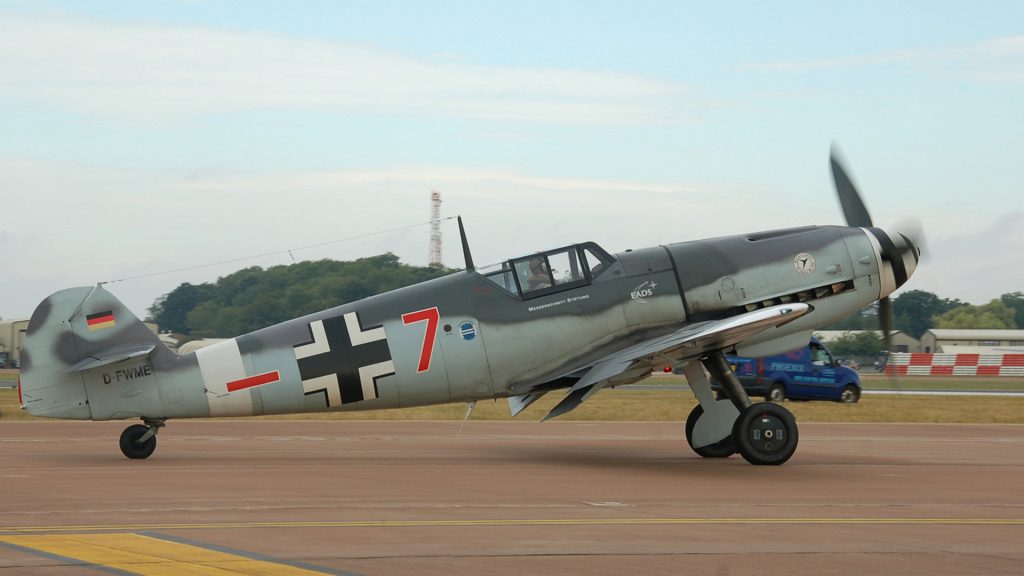
Bf 109 – The Performance & Operations
As we said in the beginning, the first operation the Bf 109A was used in was the Spanish Civil War between 1936-1939. The Bf 109 then became the main fighter of Luftwaffe by September 1939 which replaced the biplane fighters and it played a critical role in gaining air superiority for Wehrmacht especially during the early phases of the Second World War. It was utilized as an escort fighter during Battle of Britain against its main rival, the Spitfire. The results of that battle were mixed, but the Bf 109 quickly showed its capabilities not only as a fighter, but as a fighter-bomber as well during the Invasion of Yugoslavia, Operation Barbarossa and Battle of Crete. The Bf 109 has the most aerial kills in WW2 than any other aircraft and most of these kills were executed in Operation Barbarossa, where the Bf 109 fought against a poorly trained and disorganized Soviet force. Approximately 21,200 Soviet units were lost.
Around 100 pilots were credited with the kill of 100 or more enemies and more than 2,500 Luftwaffe fighter pilots were considered aces in World War II. Near the end of the war, the tactic change put by the American USAF General James Harold Doolittle in early 1944 allowed the Allies to have air supremacy over Reich, thus ending the Luftwaffe’s supremacy over the Allied forces during the war. The Bf 109 remained in foreign service many years after the war ended. The Finnish Air Forces did not retire their copies until 1954 and they were used in the Continuation War. Romanian Air Force also used Bf 109’s until 1955. More countries to use the model include Swiss Air Force and Spanish Air Force in which the Bf 109 flew well until late 1960’s. Let’s take a look at its performance figures to see why this aircraft was a success.

Which fighter plane would win in a fight?
The Bf 109 was powered by Daimler-Benz 605 Inverted V12 engine that produced 1,475 HP @2,800 RPM. It had a kerb weight of 2.700 kg (5952 lbs). The Bf 109, therefore, was lighter and faster than the Spitfire, and its top speed of 685 km/h (426 mph) meant that the Spitfire was outclassed performance wise. Although the Bf 109 was superior mechanically, it wasn’t enough for the Luftwaffe to win the war as the tactic changes in the Allied powers meant that the Spitfire could operate much better than the beginning of the war. Now though, if we were to put the two back in the sky against each other with equally skilled pilots, it’s likely that the Bf 109 could win the fight. However, it’s likely to struggle. Consequently, both fighters are now aviation legends that established the power of the fighter planes in air forces.

